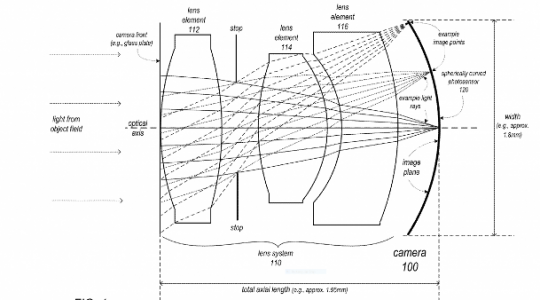Apple has recently been granted a patent for an imaging technology which could significantly reduce the size of digital camera modules, without any loss in quality.
Thanks to the laws of Physics, smaller cameras can capture less light than larger ones – a small smartphone image sensor simply has less light falling on it than a big camera sensor, due to its surface area. This is a big problem for smartphone cameras which obviously need to remain as small as possible to fit within a phone case unobtrusively.
On the 26th of this month, Apple was granted 53 patents, among which is No. 9,244,253, “Small Form Factor High Resolution Camera”. This new camera squeezes a larger sensor surface area into a smaller space, while simultaneously simplifying the lenses which go with it. This means better light-gathering ability:smaller, less-complex lenses and more Instagram followers for everyone (maybe).

Originally filed in 2014, the patent describes a camera sensor which is not flat, as found in conventional camera systems, but spherically curved like a cut-off section of a ping-pong ball. The inner surface is covered with light-capturing photosites much as a normal flat sensor would be, while the outer surface is fitted with connectors and other components for integration into the camera system. The curved sensor occupies a little more depth than a traditional flat sensor, but at the same time occupies a smaller footprint.
A spherically curved sensor also has advantages when it comes to the optics required to focus the image.
Part of the job of a multi-element lens, as found in most cameras and current iPhone models, is to focus the incoming light accurately onto the flat surface of the image sensor. However, a simplistic spherical lens would naturally focus the image onto a curved surface. By making the imaging sensor’s surface curved, Apple has therefore drastically reduced the required complexity of the lens. You can see from the patent diagram that a three-element lens is in use, whereas the iPhone 6S currently uses a five-element lens.
Source: forbes.com











